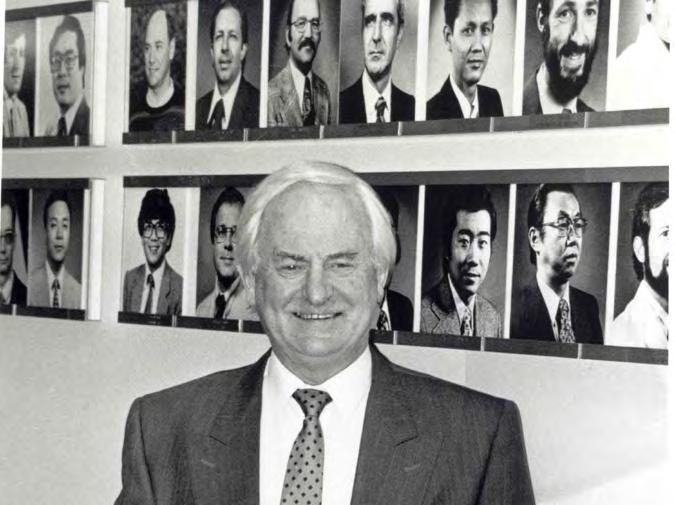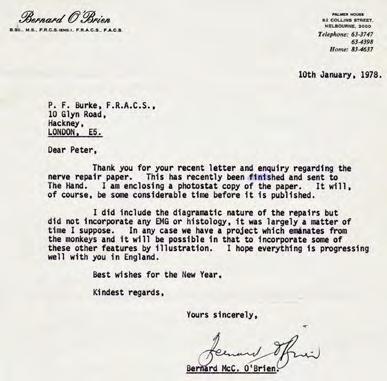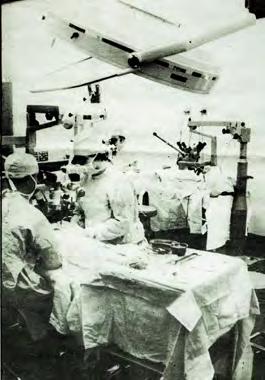
6 minute read
Publish or perish?
Working together: the surgical Mentor and the surgical Trainee
In 1961 Professor Ian Aird of London, wrote, The Making of a Surgeon: the 15 chapters encompassed historical aspects, attributes requisite in a surgeon, the registrar, and surgical training abroad, inter alia.
Advertisement
Chapter 7, The Registrar, notes: ‘the proper duties of a registrar are to assist at major operations, to perform lesser operations under the direction of his seniors, to make sure that full and accurate notes are kept about patients, to be concerned particularly with preoperative and post-operative care, to extend his reading, and if possible, to begin to engage, also under suitable direction, in the work of a research team’. This advice had been foreshadowed in an editorial of the November 1950 ANZ Journal of Surgery, when Sir Hugh Devine, former President of the Australasian College, wrote on Surgical judgement: ‘It is judgement even more than skill that makes a truly successful surgeon. At the outset of surgical training the student is required to absorb a mass of accepted knowledge, and then as time goes on, the surgeon begins to exchange memorising for reasoning habits of mind. ‘Under the influence of those who have attained a position in the profession, which entitles them to hand on the torch of knowledge, the way of wisdom and judgement becomes apparent to the surgical trainee’. In June 1985, on being conferred with the Honorary Fellowship of the Royal College of Surgeons in Ireland, Bernard O’Brien FRACS delivered an address, The Challenge of Surgery. His comments included these words, with reference to the desirable characteristics of a surgeon: ‘Young surgical trainees and surgeons need intellectual as well as technical skills. It is my passionate belief that early in a surgical career one should be intellectually challenged in depth, and I do not mean the day-to-day intellectual challenges that arise in diagnosis and patient management, but a deep study of a specific area. 'This may be, for instance, an analysis of results in the clinical field. It can consist of a research project, either clinical or experimental, which may lead to a publication or even a thesis for a senior degree.’ O’Brien had instituted the Microsurgery Foundation at St Vincent’s Hospital Melbourne in 1970, which led to the establishment of the Microsurgery Research Centre. Research Fellowships were established, which attracted high quality Trainees from around the world, many of whom returned to their own country and established themselves as international leaders in the field of microsurgery. Following O’Brien’s early death in 1993, an obituary written by Professor Wayne Morrison, outlined his friend’s lifetime achievements—from his appointment at St Vincent’s where with the support of Dick Bennett, Professor of Surgery, O’Brien gained access to a disused mortuary. He immediately commenced animal research into microvascular repair techniques, histological evaluation of repair and injury, and the unique development of microsurgical instrumentation, which led to some of the earliest publications in this field.
Initially using his own money, O’Brien soon gained NHMRC research funding, and this support continued almost uninterrupted until his death. In May 1975, the Sunday Press Magazine in Melbourne featured a prominent article titled, Miracles, we do now: raising money, takes longer. Essentially it was an article designed to garner financial resources for the research unit at St Vincent’s. This was just one of the great skills of Bernard O’Brien—the ability to inspire support, financial and otherwise, for his interests. The article detailed that there were four full-time surgical research fellows, and eight part-time surgeons and that St Vincent’s had the largest microsurgical research unit in the world. I chanced to be


photographed in the research laboratory for that fund-raising publicity. In years past, many Australasian surgeons travelled abroad to complete their surgical training. Now the tables had turned, and surgeons were coming to Australia for clinical training and microsurgical research opportunities: Bernard O’Brien had ‘reversed the tide’. Over time, 100 candidates from more than 20 different countries completed Fellowships of one year or longer. Research output became prodigious leading to more than 300 publications, innumerable chapters and two books. Such was the enthusiastic influence of Bernard O’Brien that the Bernard O’Brien Society was established—the first official meeting being held on 20 June 1983 in New York City. This was held during the Seventh Symposium of the International Society of Reconstructive Microsurgery, and 15 members of the society attended. The Secretary, James B Steichen MD of Indianapolis, noted that 60 letters were sent in April of that year to all potential members of the Bernard O’Brien Society. Thus, it came to pass—en route to Fellowship, and working for a year in 1972 as a Graduate Research Assistant in the Department of Surgery, St Vincent’s Hospital Melbourne—that one came to be involved in both clinical research on deep vein thrombosis and laboratory research in the developing field of microsurgical repair. Not only did the Trainee undertake all the microsurgical procedures, but was also required to record, detail and writeup any account recording the research undertaken: these were exciting times. Personal research work resulted in the publication of a paper A comparison of three techniques of Micro Nerve Repairs in Dogs, P F Burke and B McC O’Brien, Melbourne, published in June 1978 in The Hand, Journal of the British Society for Surgery of the Hand. The paper noted that although peripheral nerve repairs had been practised since the 19th century, the advent of the operating microscope, combined with improved suture materials had resulted in increased experimental and clinical work on nerve repairs. Accordingly, it was decided to conduct an evaluation of the role of the epineurium in peripheral nerve repairs, and simultaneously, to compare the overall results of nerve repairs performed in different ways. The common peroneal nerve in the dog was selected as it was easily accessible and had few but relatively large funiculi. The experiments were designed to compare the motor re-innervation of both the peroneus longus muscle and the extensor digitorum brevis muscle of the limb selected. Careful review of return of function of the common peroneal nerve, following microsurgical epineurial, funicular and combined epineurial/funicular repairs in a series of dogs revealed that no one method was superior to the others, as assessed by electromyography and histology. The simple epineurial repair offered an equal chance of recovery as a more complicated repair, providing fine sutures and microscopic techniques were used. In this experiment, the one exception to this general conclusion was, that at the greater distances, a funicular/epineurial repair was more likely to provide better results.
The surgery had been undertaken in 1972 –73, the electromyographic and histopathological results analysed at the University of Melbourne, results statistically analysed, a draft paper prepared, and the junior author then undertaking further studies in London, continued correspondence with his mentor, enabling final completion of the paper. The entire process, incorporating the observation of the management skills of one’s mentor in organising, funding, and furthering research activities, coupled with subsequent guidance in the preparation of a paper to a standard acceptable for publication, aided immeasurably in the transition from trainee to trainer. A most successful collaboration.
Mr Peter F Burke FRCS FRACS DHMSA
Images (from far left) Bernard O'Brien and Research Fellows at his Foundation; Scheme of assessment of micro nerve repairs in dogs; Bernard O'Brien Society letterhead; 1978 letter confirming project completion; The author, centre foreground, operating in Research Foundation.












